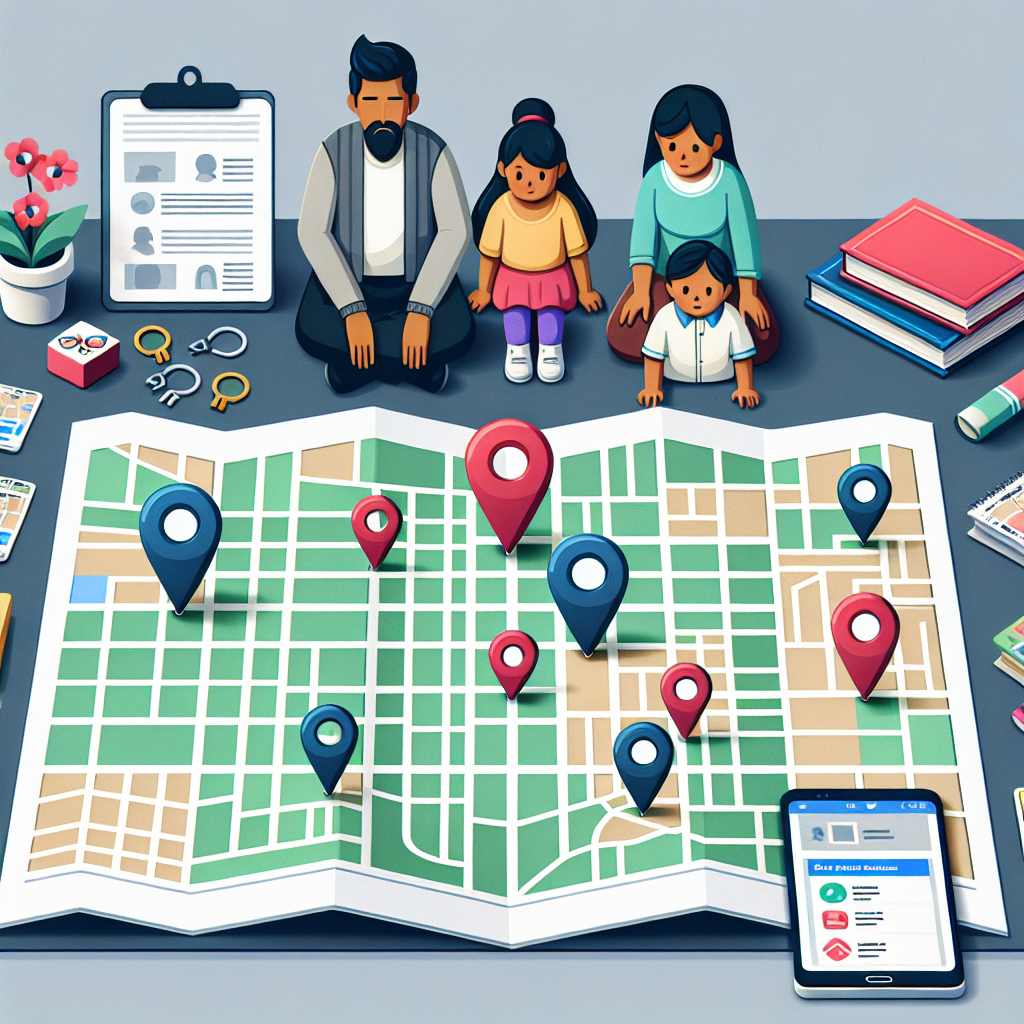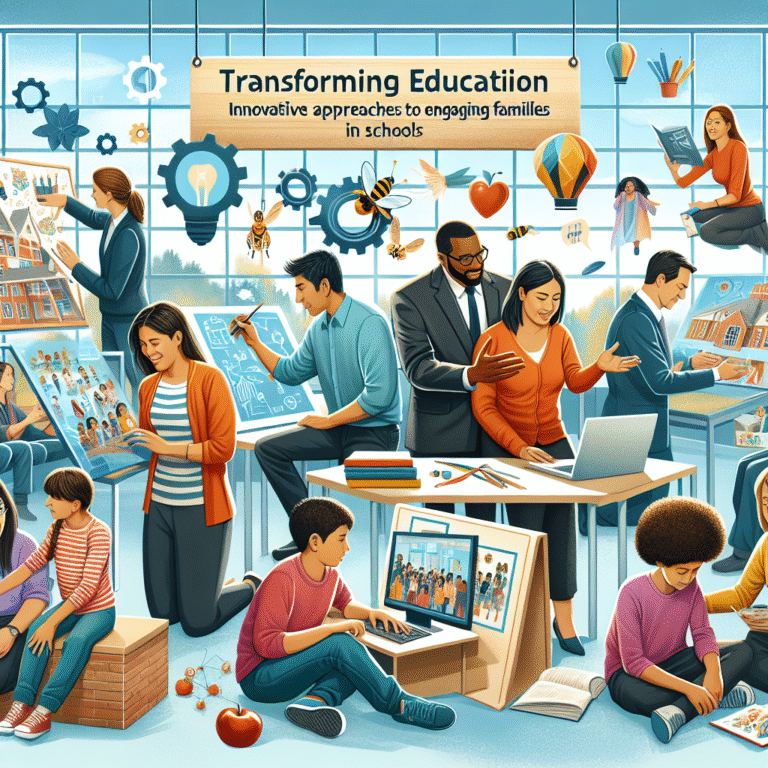
Introduction
In today’s fast-paced world, the essence of community cannot be overstated; it’s where we find support, resources, and connection. Navigating Your Community: Essential Resources for Families and Individuals is a crucial topic that resonates with many. Families and individuals alike often find themselves asking questions about how to access vital services, engage with local programs, and foster a supportive environment. Whether you are a new resident seeking to build a network or someone trying to enhance your community interactions, understanding the available resources can empower you greatly. Let’s embark on a journey through vital community resources that can enrich our lives, strengthen our networks, and streamline our daily challenges.
Understanding Community Resources
Community resources refer to various local services, organizations, and programs designed to assist individuals and families in navigating everyday challenges. These resources are available at various levels, from local government services to non-profit organizations, and often encompass education, health, social services, and transport. To effectively navigate your community, one must be aware of the types of resources available and how to leverage them.
Types of Resources
-
Health Services:
- Hospitals and Clinics: Access to medical care and specialists.
- Mental Health Programs: Support groups and counseling services.
-
Educational Services:
- Public Schools: K-12 education options.
- Libraries: Community hubs for learning and exploration.
-
Social Services:
- Family Welfare Programs: Assistance with housing and food security.
- Community Centers: Gatherings that foster social connections.
- Recreational Resources:
- Parks and Recreation: Outdoor spaces for family fun and fitness.
- Sports Programs: Youth engagement through team sports.
Case Study: A Family’s Journey to Accessing Health Services
Consider the Johnson family who recently moved to a new city. Initially overwhelmed by the varying health service options, they decided to utilize local community resources. By visiting their local health department, they discovered vaccination programs, family practice clinics, and mental health supports specifically designed for families. This proactive approach not only benefited their health but also connected them to support networks that eased their transition into the community.
Identifying Key Community Navigators
Navigating Your Community: Essential Resources for Families and Individuals often hinges on knowing the right people who can guide you. Community navigators are individuals who help others find and access resources effectively.
Role of Community Navigators
-
Resource Mapping: They help identify available services tailored to specific needs.
-
Building Relationships: Navigators often have established relationships with service providers, making referrals smoother.
- Education: They provide training or informational sessions about how to access different resources effectively.
Case Study: Local Navigator Success
In Brooklyn, a community organization initiated a "Navigator Program" where trained volunteers assist families in finding educational resources. After using the service, many families reported improved enrollment in local after-school activities and workshops. In this way, community navigators serve as invaluable assets in navigating various vital systems and services.
Digital Innovations and Resources
In our technology-driven world, many community resources are now accessible online. Websites, mobile apps, and social media channels have become essential tools in navigating your community.
Key Digital Tools
-
Community Websites: Usually managed by local governments or organizations, these sites provide comprehensive listings of services.
-
Social Media Groups: Facebook or Nextdoor groups often host lively exchanges of information about local events and resources.
- Mobile Apps: Applications designed to help you locate nearby services (e.g., healthcare providers, food banks) can be life-changing for families.
Case Study: The Role of Digital Innovation
A study conducted in San Francisco showed that a local mobile app designed to connect residents with community services saw significant uptake, particularly among families. The app allowed users to access information on food drives, youth sports, and healthcare services, leading to increased community involvement and better resource utilization.
Creating Engagement in Your Community
Navigating Your Community: Essential Resources for Families and Individuals is not solely about access; it’s also about engagement. Active participation can enhance community strength and provide families with a sense of belonging.
Ways to Engage
-
Volunteering: Offer your time to local organizations that resonate with your values.
-
Participate in Local Events: Attend community events or town hall meetings to meet neighbors and local leaders.
-
Start or Join Groups: Form clubs based on shared interests, from book clubs to sports teams.
- Leverage Community Boards: Many neighborhoods have boards where residents can post events, resources, and local news.
Case Study: Community Engagement Transformation
In a recent initiative in Austin, families participating in local neighborhood clean-ups reported feeling a stronger sense of connection to their community. After engaging in team efforts, participants found it easier to navigate available resources, as they developed a network of supportive peers willing to assist one another.
Important Resources for Families and Individuals
Now that we have discussed various pathways to navigate your community, let’s delve into some essential local resources that families often rely on.
| Resource Type | Example Services |
|---|---|
| Health | Clinics, health fairs |
| Education | Local school programs, adult education |
| Social Welfare | Housing assistance, food banks |
| Recreation | Youth sports leagues, adult classes |
| Mental Health | Counseling services, support groups |
Conclusion
Navigating Your Community: Essential Resources for Families and Individuals is vital for fostering well-being and connection. Families equipped with knowledge of local services and resources have the upper hand in tackling challenges and enriching their lives. As we’ve explored, community navigators, digital innovations, and engagement opportunities form a robust framework that supports families and individuals alike.
In conclusion, I encourage you to take the first step: reach out to local services, utilize digital resources, and actively engage with your community. You’ll not only find the support you need, but you’ll also contribute to a thriving and connected neighborhood. Let’s transform our communities together!
FAQs
1. What are community resources?
Community resources are services, programs, and organizations that provide assistance and support to individuals and families, from healthcare and education to social services and recreational opportunities.
2. How can I find community resources near me?
Local government websites, libraries, and community centers often provide directories of services, and social media platforms like Facebook groups can also be excellent sources of information.
3. What is the role of a community navigator?
Community navigators assist residents in identifying and accessing local resources, providing valuable guidance and support tailored to individual or family needs.
4. Are there digital tools to help navigate community resources?
Yes! Many local governments and organizations offer websites, apps, and social media platforms that can help you find essential services and engage with your community.
5. How can I become more involved in my community?
You can get involved by volunteering, attending local events, joining community groups, and participating in town meetings to engage with your neighbors and community leaders effectively.
By understanding and embracing the resources available to you, you’ll find that navigating your community can lead to stronger connections, enhanced security, and a fuller, more vibrant life for you and your family.


















